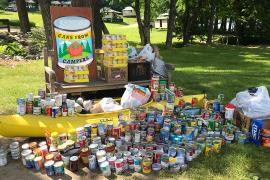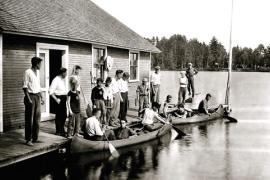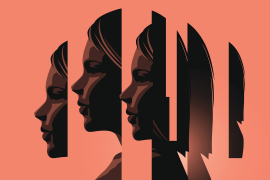Everyone is taking photos today!
As counselors, you can offer your campers creative ideas for capturing the treasured moments of their summer of fun at camp.
Preparing to Shoot — Staff Orientation Week
Bring your point-and-shoot, digital camera from home, or ask the camp if there are cameras to use. Most camps have designated photographers who take photos of campers and activities to post on their websites at night, but wouldn’t it be fun for you and your campers to take photos of each other? And who knows, you might end up capturing a truly special moment that the official photographer wasn’t available to document.
Spend some time during staff orientation to experiment with the camera (or cameras) you’ll be using during the summer if you aren’t yet familiar with it. Learn the settings and features the camera offers. This will help you to see and understand the process of creating memories in pictures for parents and campers to cherish long after the summer is over, and you’ll be in a better position to pass that knowledge on to your campers. If you are not a seasoned photographer, ask others on staff for help and ideas. Your first images might not be great, but practice will give you time to learn and gain confidence before campers arrive.
You can also enlist your fellow camp staff to help you choose themes and photo subjects that you’ll give your campers each day during the camp session. These photo assignments can help create that sense of camp being a family quickly and offer teaching moments for different photography techniques.
Something else you can do during staff orientation week (or some other time before the first summer camp session begins) is create a sample picture book or slide show for your campers to see and reference. They will find the process of photography easier if you show them examples of photos you feel are well composed. Show them photos to which viewers will respond positively and photos that are not as successful, and explain why.
Pushing the button is the last part of taking the image. Teaching your campers to see, think, and feel first, before they react, makes truly great photos.
Once your campers arrive, make sure you establish photo ideas and/or specific assignments with them before you go on your outdoor experience each day, and tailor them to the day’s planned activities. For example you can show campers at the waterfront how to use waterproof cameras while they swim or boat. During sport activities you can show your campers how to use stop action or blur to capture movements by using the sports settings built into most point-and-shoot cameras.
It is not necessary for all of you to have a camera for the summer. You can rotate and share. This will create excitement for campers anticipating their turn and spur a desire to challenge each other to do their best when they get camera time. And your encouragement is what campers will long remember after they download and view their day’s experience. The more positive you are about what they create, the more confidence they will exhibit each time you take a group of campers out to photograph.
Perspectives and Angles
The fun and wonderful part of a digital capture is you don’t have to wait to see the results. You can try snapping the same subject several times, just in a different way, and then keep the best angle, lighting, and moment based on the images you can see on the view screen.
In photography, there is a saying: “If your pictures aren’t good enough you are not close enough.” For practice, encourage campers to take at least four images of the same scene from different angles, which will help them improve their photographs.
- Straight on
- From the side
- From below
- From above
Brainstorming different angles and perspectives together as a group before you start shooting a subject encourages creativity in addition to fostering team spirit. Campers can suggest and encourage each other as they are engaging in the event, building the anticipation of seeing their ideas come to life on the camera’s screen.
Thousands of ideas can be brought visually to life every summer. Writing down words that can be used to spark the imagination is one way of coming up with different topics. This could be a fun game for your cabin at night.
The Sport of Photography
In any sport, practice, practice, practice is what the coach expects. You wouldn’t go out for a race without having first practiced running many times. Use this analogy to teach your campers that, through practice, they can achieve new and exciting results as well.
Be sure, as their photography coach, that you use a positive approach when reviewing their photos, understanding there are no really bad images, just ways to make really great ones.
You likely took a number of photos throughout the year of friends, family, and daily activities back home. Think of the ones people laughed at and enjoyed the most; ask yourself what made them special? Try to use some of those ideas with your campers this summer.
Saving, Sorting, and Storing
Snapping many images each day creates additional opportunities for teaching moments. If you have the space, consider designating a photography lab space with one master photo download area, or individual stations, designed to encourage feedback. Set up folders on a few computers, if possible, and name a separate folder for each of your camper-photographers. When a camera’s memory card is downloaded, file photos in the appropriate folder and review some of the photos on screen to make suggestions for improvement and to give plenty of praise. Always find something good about a camper’s photo, whether it is the composition, lighting, or subject matter. And make sure any suggestions are always constructive, not negative. Sharing the images on screen as a round table critique with others creates an equal playing field.
You could also set up a studio space where your campers can print their images, and then exhibit them on a cork wall, in the dining hall, or have an art show toward the end of the camp session.
In my experience, photography at camp allows campers who enjoy things besides sports to feel a sense of pride when photos are displayed. Everyone is excited remembering the events and moments captured in pictures. Those who were not there feel included in the activity and might even decide to try photography themselves at a later time.
You could also suggest that some of the photos taken by campers be uploaded to the camp’s website for parents and grandparents to enjoy.
Positive Endings
Consider saving each camper’s photos on a DVD at the end of the camp session to take home, so they can relive their camp experience through the images and share them with family and friends. Moms and dads will feel good about the camp they chose seeing their youngster’s body of work created during their time away.
Photography has become a sought-after activity that is being added to many camp programs. This is your opportunity to use what you love and share it with your campers this summer. Combining your abilities with those of your campers in the process will enhance the overall camp experience and help everyone feel a part of the community from the start of camp. Above all, have fun helping your campers develop a critical eye and create intriguing, memorable, and amazing images that capture the wonder of camp.
| Photography Etiquette Now is a good time to familiarize yourself with camera etiquette and your camp’s photography policy. From day one, make sure your campers are aware of and understand the importance of other campers’ and staff’s privacy. Before they begin snapping away, they need to know when it is and when it is not appropriate to photograph others. |
Sheila de Lemos has an MFA in photography and has been a professional educator for over 30 years at the college and prep school level. Private and corporate clients around the country collect her fine art imagery. She has also been involved in photography at camps for 15 years. Reach her at [email protected] or visit her website at afterimageonline.com.



